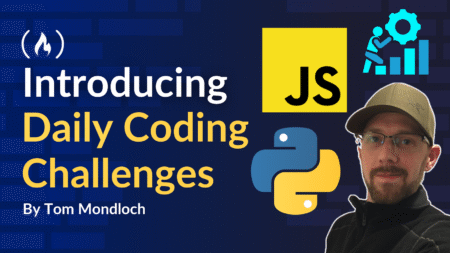You wake up, brew your coffee, and start your day with a perfectly tailored podcast summarizing the latest news—delivered in a natural, engaging voice. No manual curation, no human narration, just seamless AI magic. Sounds like the future? It’s happening now, powered by MongoDB and generative AI.
In 2025, the demand for audio content—particularly podcasts—surged, with 9 million new active listeners in the United States alone, prompting news organizations to seek efficient ways to deliver daily summaries to their audiences. However, automating news delivery has proven to be a challenging task, as media outlets must manage dynamic article data and convert this information into high-quality audio formats at scale.
To overcome these hurdles, media organizations can use MongoDB for data storage alongside generative AI for podcast creation, developing a scalable solution for automated news broadcasting. This approach unlocks new AI-driven business opportunities and can attract new customers while strengthening the loyalty of existing ones, contributing to increased revenue streams for media outlets.
Check out our AI Learning Hub to learn more about building AI-powered apps with MongoDB.
The secret sauce: MongoDB + AI
In a news automation solution, MongoDB acts as the system’s backbone, storing news article information as flexible documents with fields like title, content, and publication date—all within a single collection. Alongside this, dynamic elements (such as the number of qualified reads) can be seamlessly integrated into the same document to track content popularity.
Moreover, derived insights—e.g., sentiment analysis and key entities—can be generated and enriched through a gen AI pipeline directly within the existing collection.
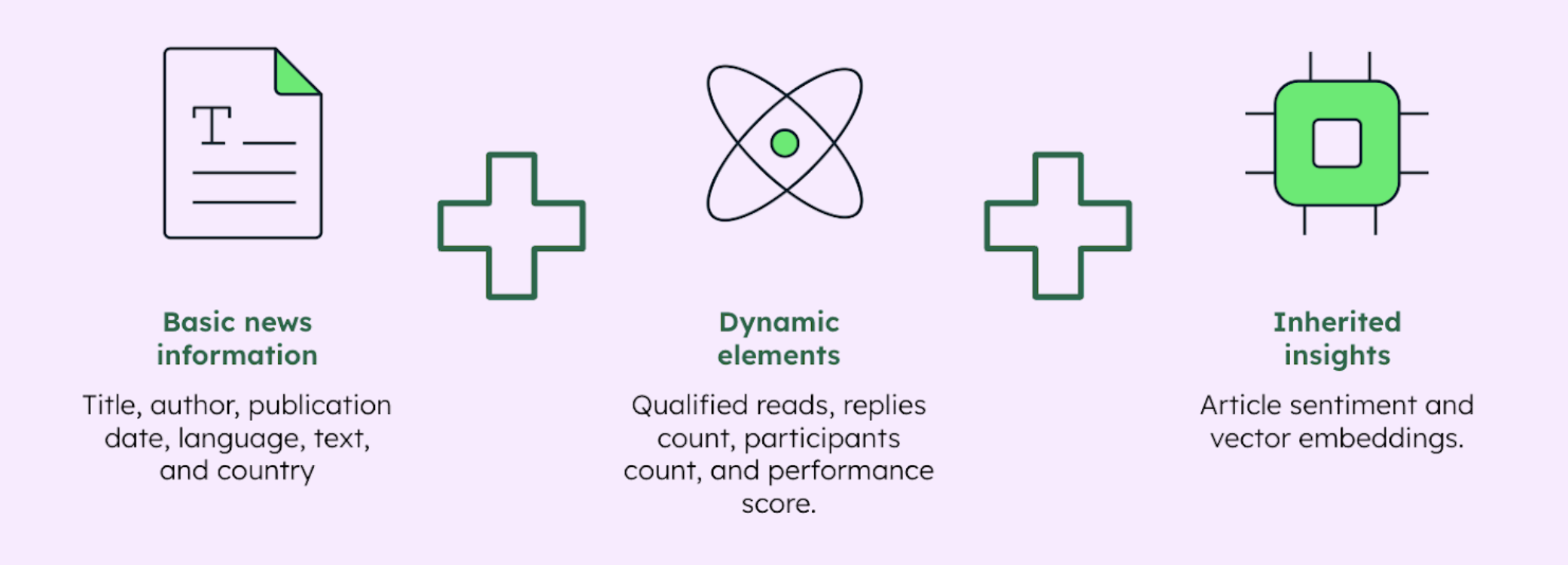
This adaptable data structure ensures that the system remains both efficient and scalable, regardless of content diversity or evolving features. As a result, media outlets have created a robust framework to query and extract the latest news and metadata from MongoDB. They can now integrate AI with advanced language models to transform this information into an audio podcast. With this foundation in place, let’s examine why MongoDB is well-suited for implementing AI-driven applications.
Why MongoDB is the perfect fit
News data is inherently diverse, with each article containing a unique mix of attributes, including main content fields (e.g. id, title, body, date, imageURL), calculated meta data (e.g. read count), generated fields with the help of GenAI (e.g. keywords, sentiment) and embeddings for semantic/vector search. Some of these elements originate from publishers, while others emerge from user interactions or AI-driven analysis. MongoDB’s flexible document model accommodates all these attributes—whether predefined or dynamically generated, within a single, adaptable structure. This eliminates the rigidity of traditional databases and ensures that the system evolves seamlessly alongside the data it manages.
What’s more, speed is critical in news automation. By storing complete, self-contained documents, MongoDB enables rapid retrieval and processing without the need for complex joins. This efficiency allows articles to be enriched, analyzed, and transformed into audio content in near real-time.
And scalability is built in. Whether handling a small stream of updates or processing vast amounts of constantly changing data, MongoDB’s distributed architecture ensures high availability and seamless growth, making it ideal for large-scale media applications.
Last but hardly least, developers benefit from MongoDB’s agility. Without the constraints of fixed schemas, new data points—whether from evolving AI models, audience engagement metrics, or editorial enhancements—can be integrated effortlessly. This flexibility allows teams to experiment, iterate, and scale without friction, ensuring that the system remains future-proof as news consumption evolves.
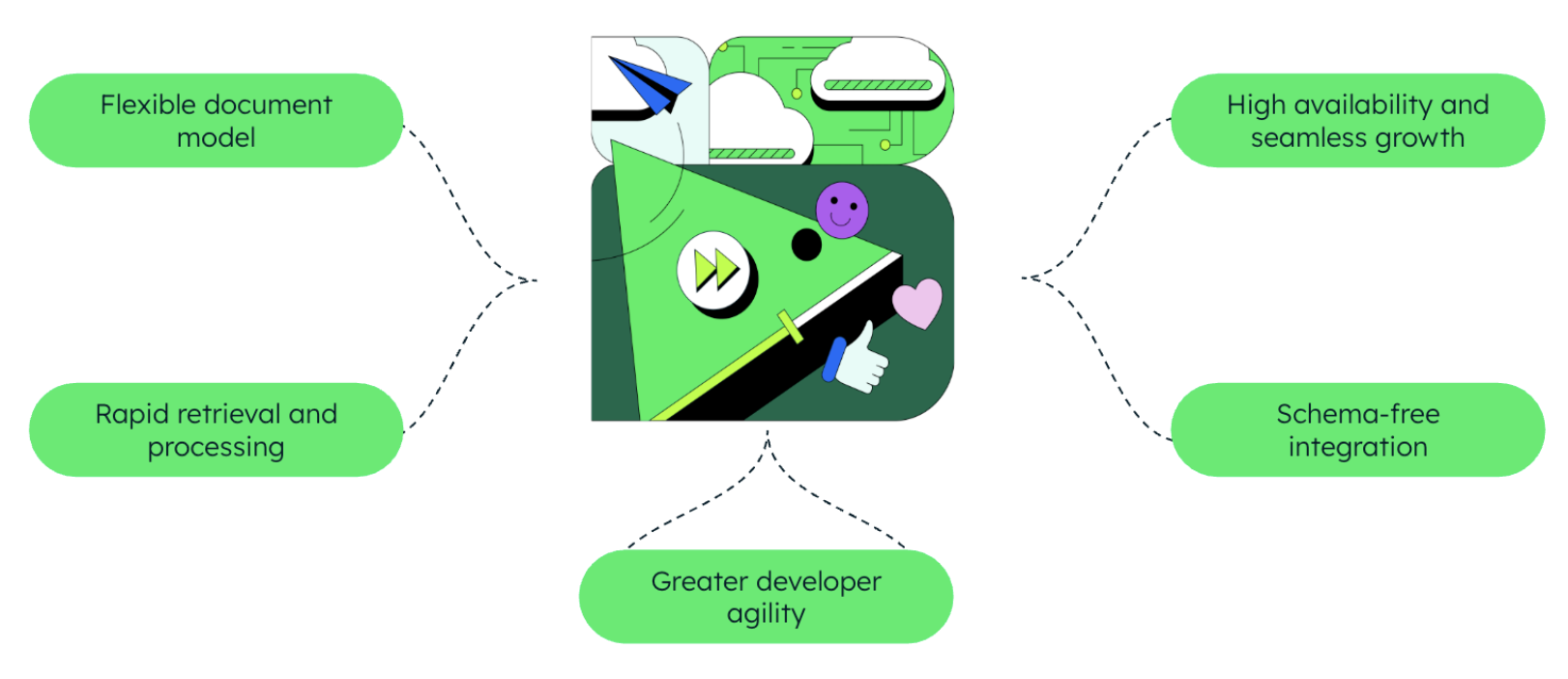
Bringing news to life with generative AI
Selecting MongoDB for database storage is just the beginning; the real magic unfolds when text meets AI-powered speech synthesis. In our labs, we have experimented with Google’s NotebookLM model to refine news text, ensuring smooth narration with accurate intonation and pacing.
Putting all these pieces together, the diagram below illustrates the workflow for automating AI-based news summaries into audio conversions.
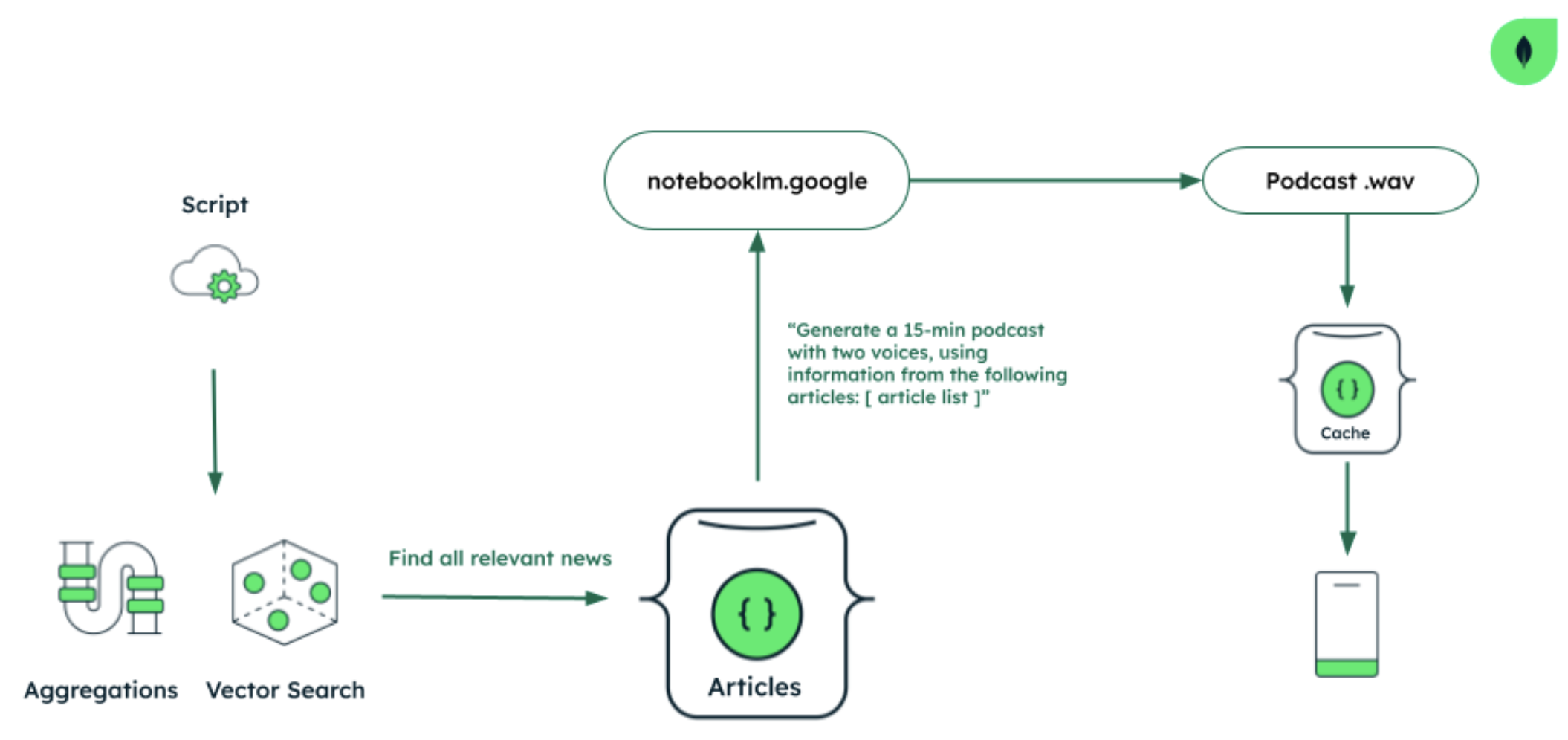
The process begins with a script that retrieves relevant news articles from MongoDB, using the Aggregation Framework and Vector Search to ensure semantic relevance. These selected articles are then passed through an AI-powered pipeline, where they are condensed into a structured podcast script featuring multiple voices. Once the script is refined, advanced text-to-speech models transform it into high-quality audio, which is stored as a .wav file. To optimize delivery, the generated podcast is cached, ensuring seamless playback for users on demand. The result? A polished, human-like narration, ready for listeners in MP3 format.
Thanks to this implementation, media outlets can finally let go of the robotic voices of past automations. Instead, they can now deliver a listening experience to their customers that’s human, engaging, and professional.
The future of AI-powered news consumption
This system isn’t just a technological innovation; it’s a revolution in how we consume news. By combining MongoDB’s efficiency with AI’s creative capabilities, media organizations can deliver personalized, real-time news summaries without human intervention. It’s faster, smarter, and scalable—ushering in a new era of automated audio content.
Want to build the next-gen AI-powered media platform? Start with MongoDB and let your content speak for itself!
To learn more about integrating AI into media systems using MongoDB, check out the following resources to guide your next steps:
The MongoDB Solutions Library: Gen AI-powered video summarization
The MongoDB Blog: AI-Powered Media Personalization: MongoDB and Vector Search
Source: Read More
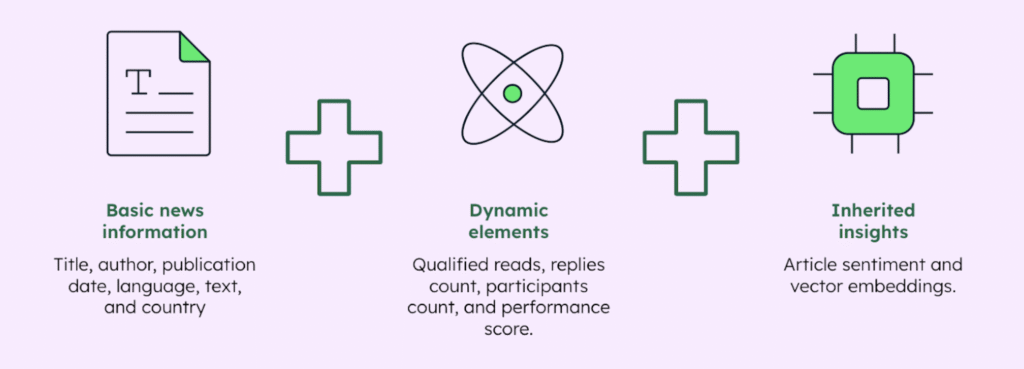
![How to focus on building your skills when everything’s so distracting with Ania Kubów [Podcast #187]](https://devstacktips.com/wp-content/uploads/2025/09/f7c52449-77f9-4fa4-bbd5-34c3773658dd-6kiwIT-450x253.png)
